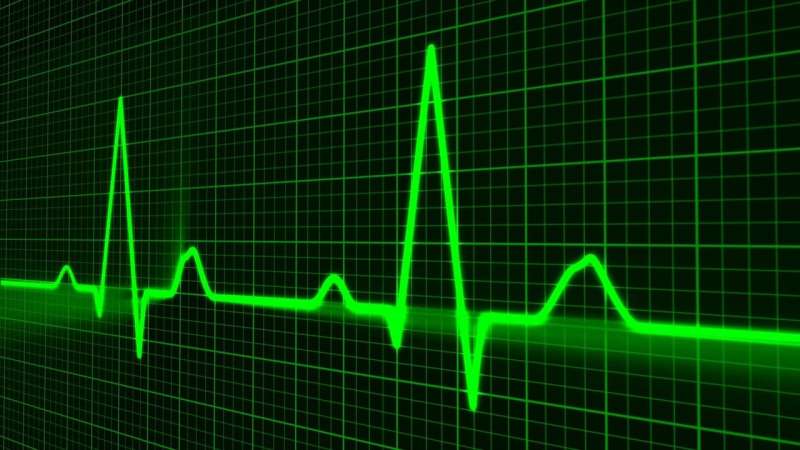
Precision medicine considers each person’s unique genetic makeup, lifestyle and environment when considering treatments for illness and disease. A team of Washington University in St. Louis researchers is taking steps toward developing precision medicine for patients with irregular heartbeats by studying how two anti-arrhythmic drugs affect different parts of the heart.
Jonathan Silva, associate professor of biomedical engineering in the McKelvey School of Engineering, and Jeanne Nerbonne, professor of medicine and of developmental biology in the School of Medicine, led a team that found that two drugs, lidocaine and ranolazine, sometimes prescribed to treat arrhythmias, work differently in the heart depending on the molecular composition of the sodium channels expressed. Voltage-gated cardiac sodium (Nav), channels conduct sodium into cells and are critical to generate and propagate action potentials through the myocardium. Since about 10% of adults over age 65 have arrhythmias, the work has broad implications on potential therapeutic outcomes. Results of the research are published in JCI Insight Aug. 9, 2021.
Native Nav channels in the heart function in macromolecular protein complexes, comprising a single Nav alpha subunit, Nav1.5, which produces the Na+ selective pore of the channel, and one or more intracellular and transmembrane accessory subunit proteins thought to influence channel stability, trafficking, localization and/or properties. The team looked at the impact of two Nav channel accessory subunits, the beta 1 and beta 3 subunits, on the interaction between lidocaine and ranolazine on Nav1.5-encoded channels. Lidocaine and ranolazine, known as Class 1b antiarrhythmics, have therapeutic potential but are ineffective in some patients and—counterintuitively—raise the risk of arrhythmia in others.
“The pathology of the heart can come with changes in the subunit composition of Nav channels,” Silva said. “If a person has a different disease and genetic background, they would have a different sodium channel composition than another person.”
Silva’s lab works at the molecular and cell levels, and Nerbonne’s lab works with mouse models and human heart tissues, allowing the team to connect the different biological scales. Wandi Zhu, first author of the paper who earned a doctorate in biomedical engineering in 2018 at WashU and is now a research fellow at Harvard University, and, began the experiments on frog oocytes, from which she gathered very detailed biophysical molecular data on the properties of Nav1.5-encoded channels expressed with and without accessory beta 1 and beta 3 subunits. Together with members of the Nerbonne lab, Zhu examined the effects of lidocaine and ranolazine on sodium channels in mouse cardiac myocytes with and without beta 1 subunits. Nerbonne’s lab also analyzed the expression of the beta subunits in mice and in human heart tissues.
Through their experiments, they found that both drugs affected the membrane voltage sensing component of the Domain III of Nav1.5, the electrical gate that opens and closes the sodium channel, in Nav1.5. When the beta 1 subunit was present, lidocaine was more effective than ranolazine. However, when the beta 1 subunit was absent, ranolazine was more effective than lidocaine. Interestingly, the beta 3 subunit had the opposite effects—when present, ranolazine was more effective, and when absent, lidocaine was more effective.
In addition, the team found that the beta 1 subunit is expressed at three times higher levels in the atria than in the ventricles of the human heart, suggesting that the molecular composition of the channels in these different regions are distinct.
“These are differences that could, in combination with inherited or acquired cardiovascular disease, dramatically impact the responses of individual patients to Class-1b antiarrhythmic therapies,” Silva said.
Nerbonne said many unanswered questions remain, so the team plans to continue studying how cardiac Nav1.5-encoded channels are regulated and under what conditions to understand how the accessory proteins influence the properties and the functioning of cardiac sodium channels.
“Although the anti-arrhythmic drug-binding site is the same for both of these drugs, we are seeing differences when channel accessory proteins are present,” she said. “We don’t yet know why, but it could be that these drugs bind to additional sites on Nav1.5, or that the presence of the accessory beta subunit changes the binding site, altering the effects of these drugs. We do know that the Class 1b anti-arrhythmic drugs work on Nav1.5-endoded sodium channels, so the difference could be in the molecular composition of the channels. These results make that a very reasonable thing to think about.”
Source: Read Full Article